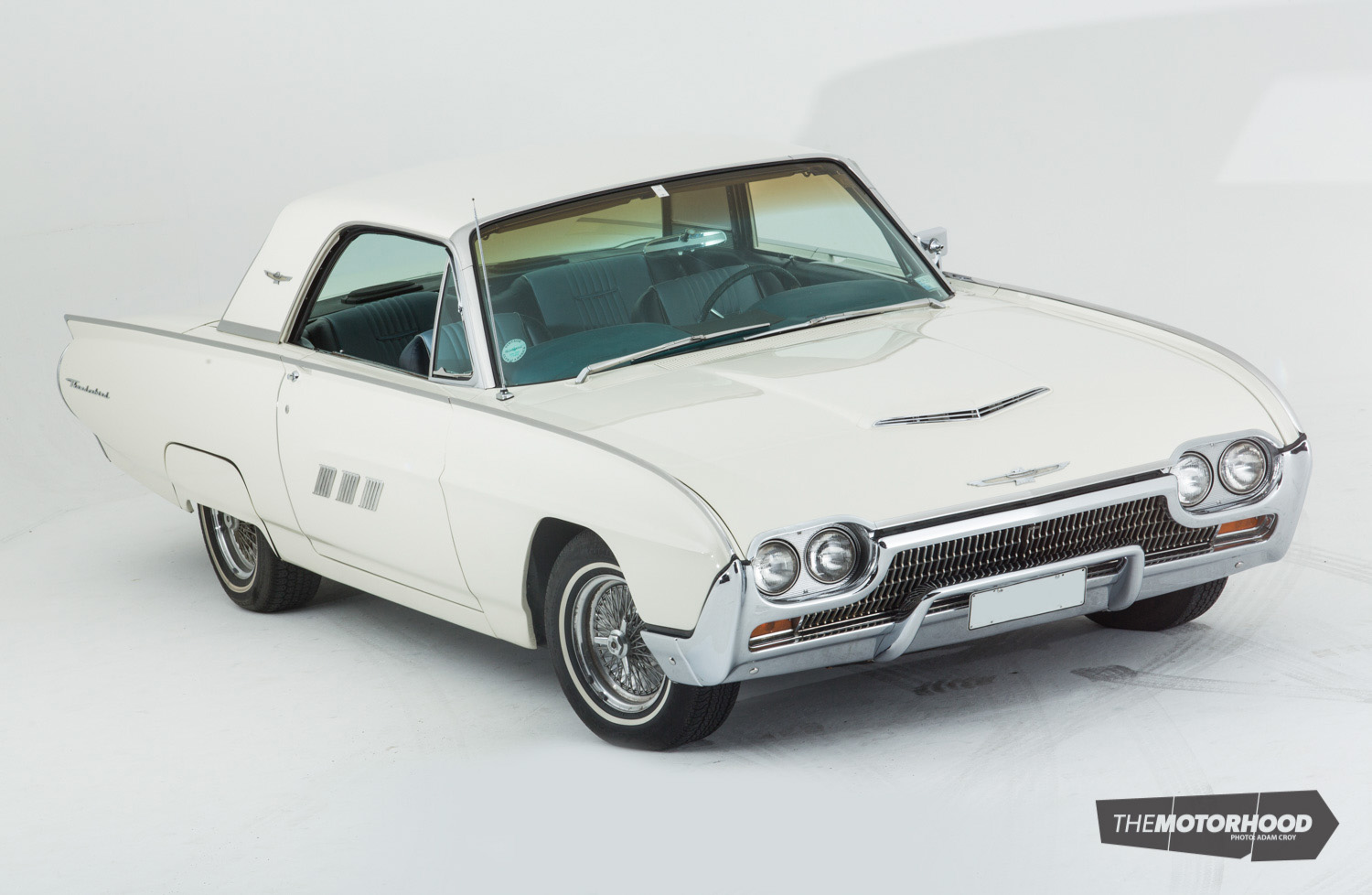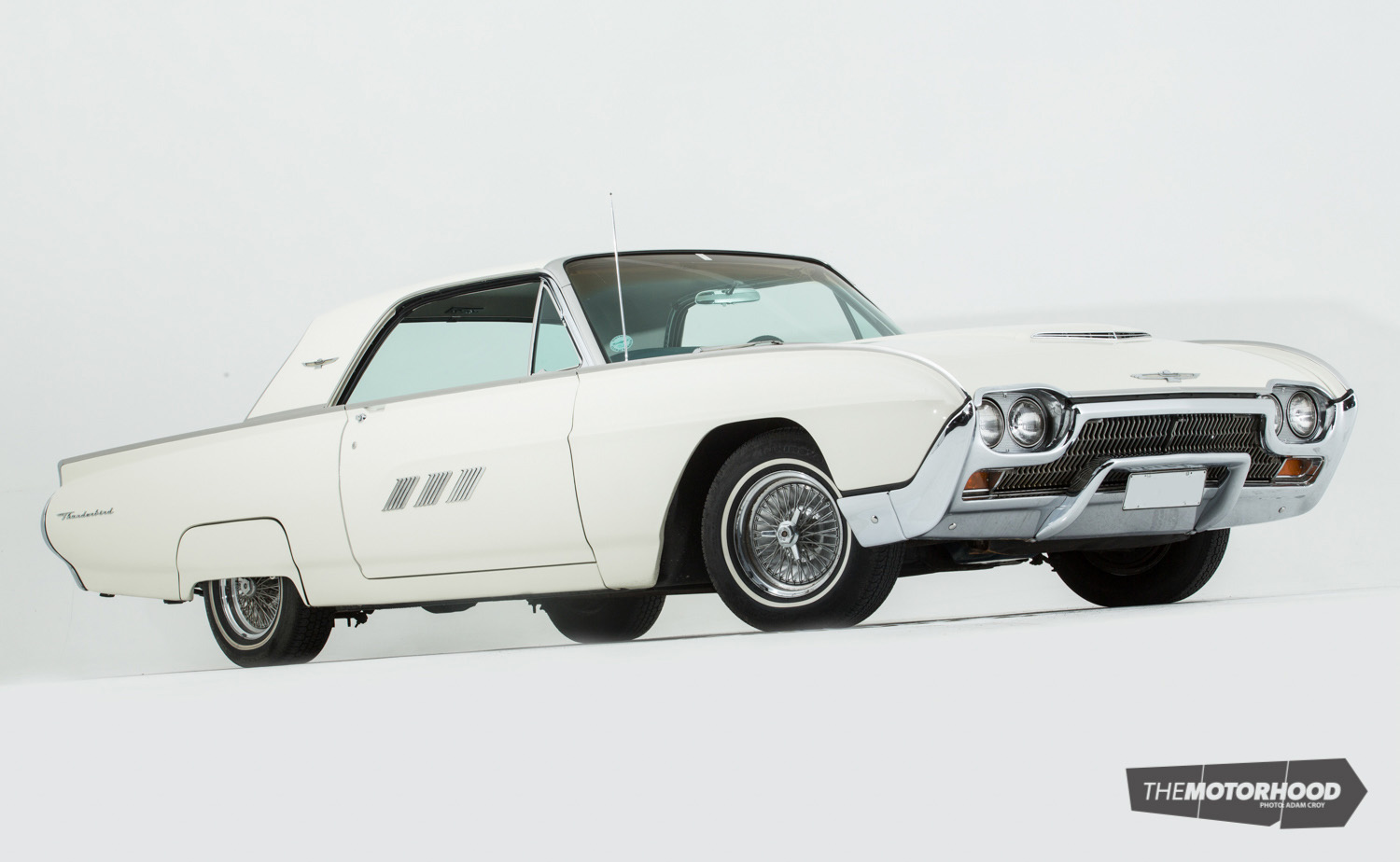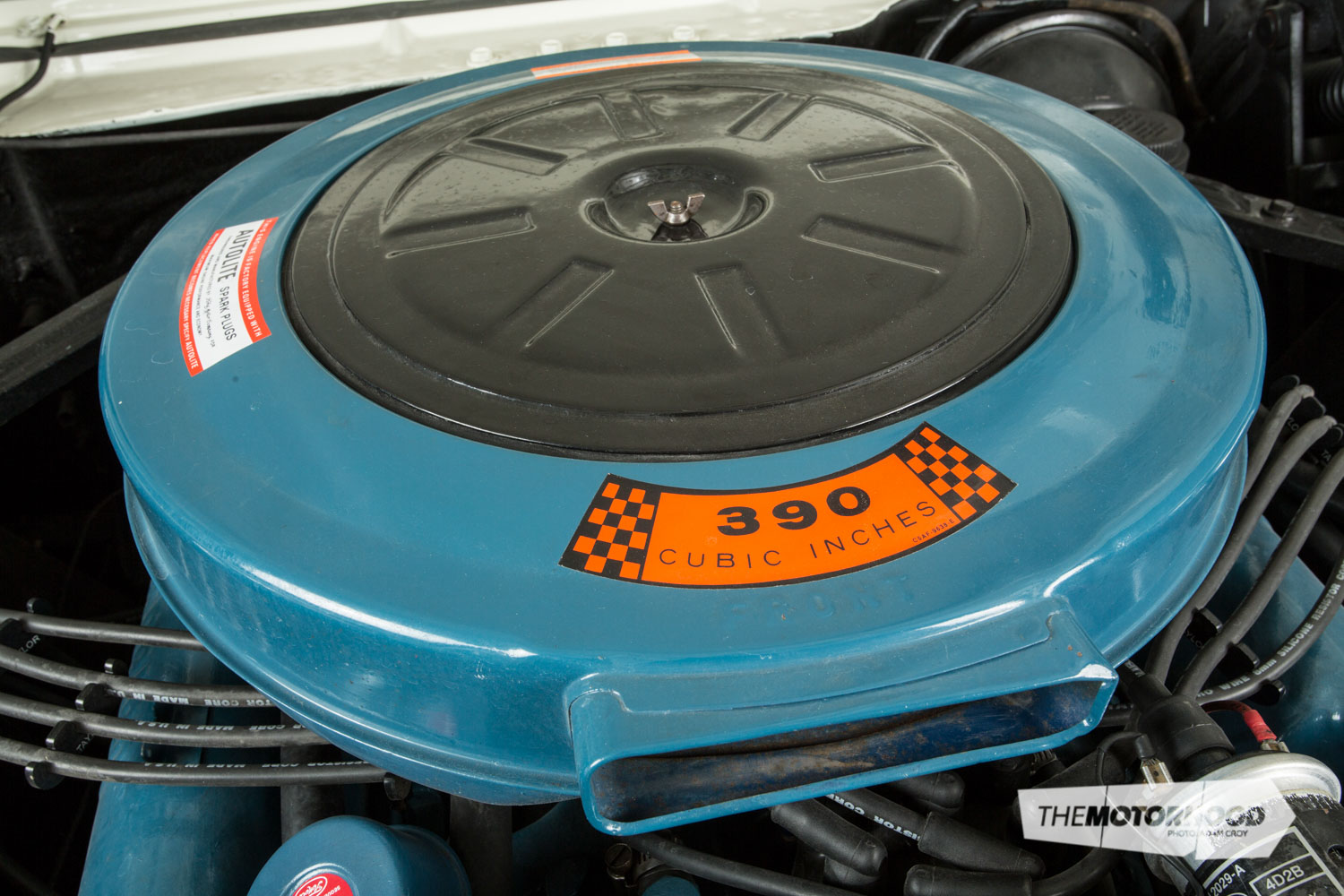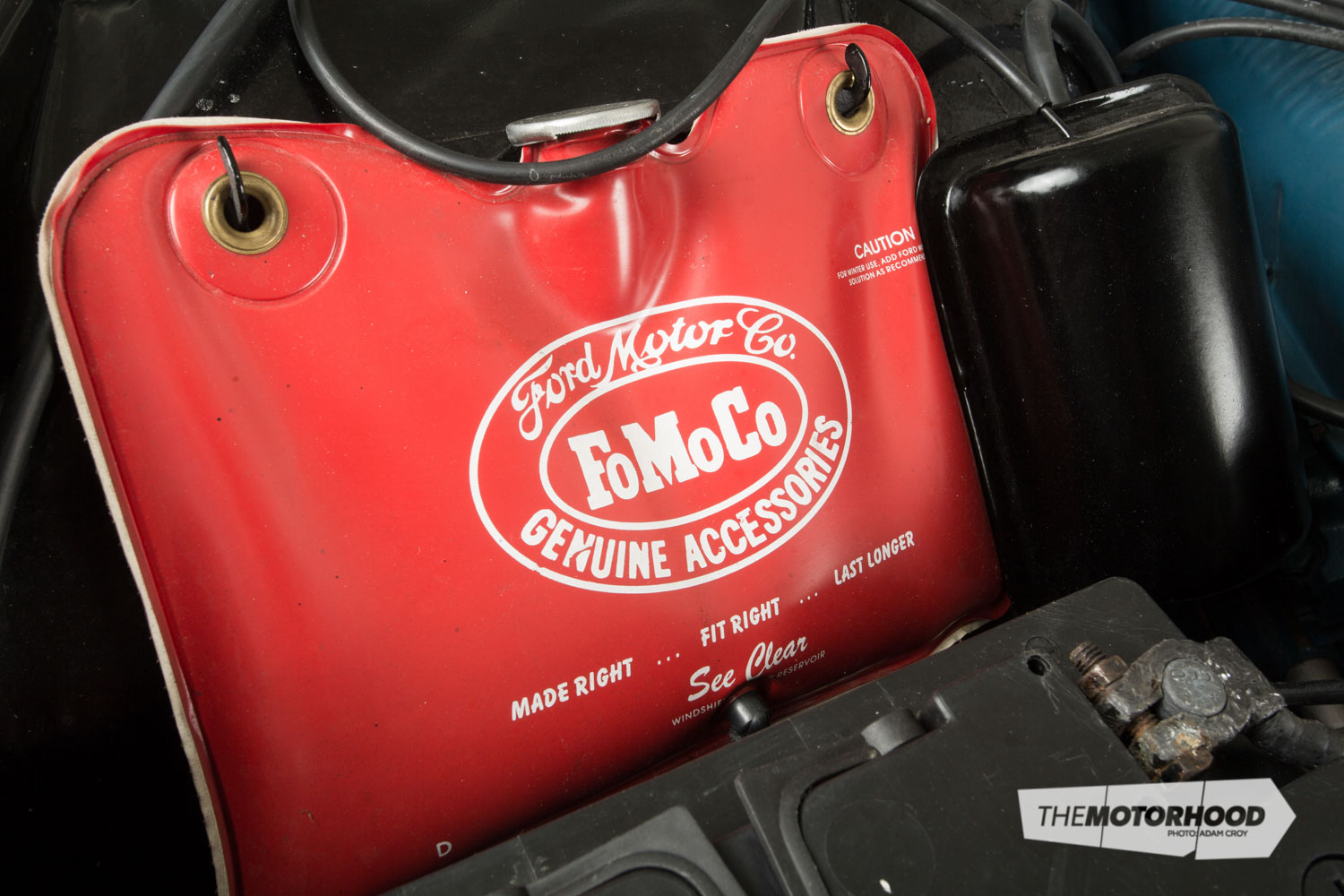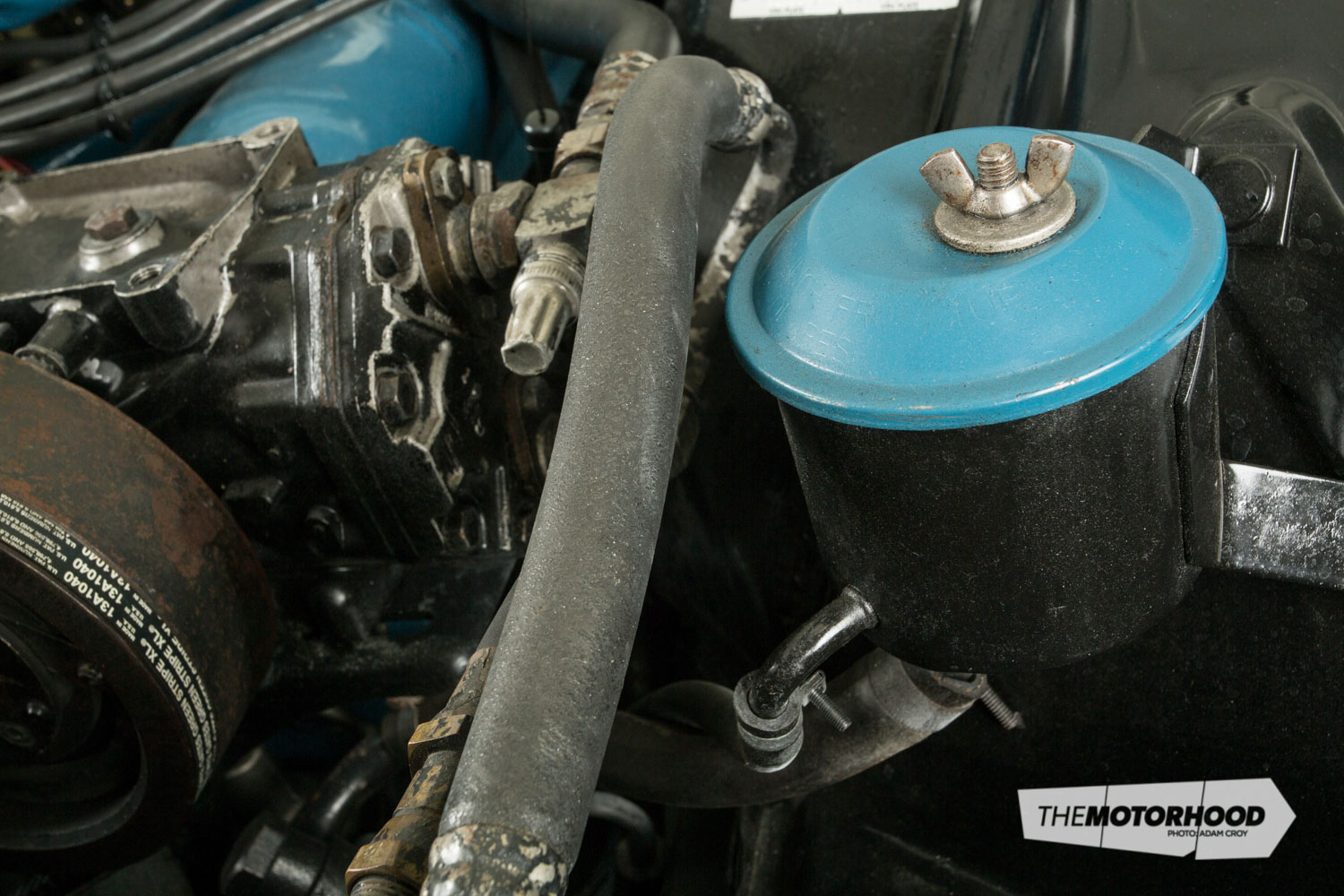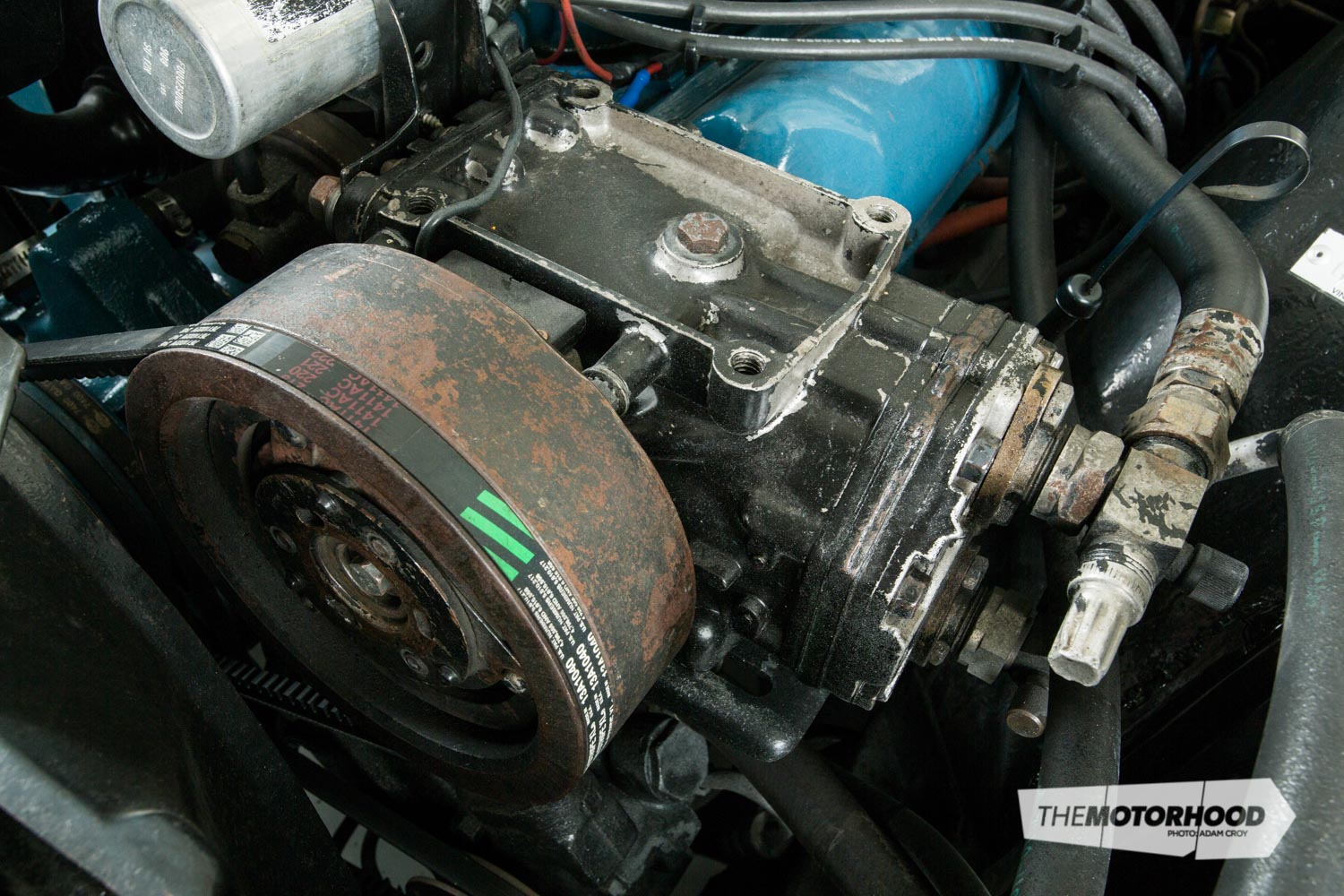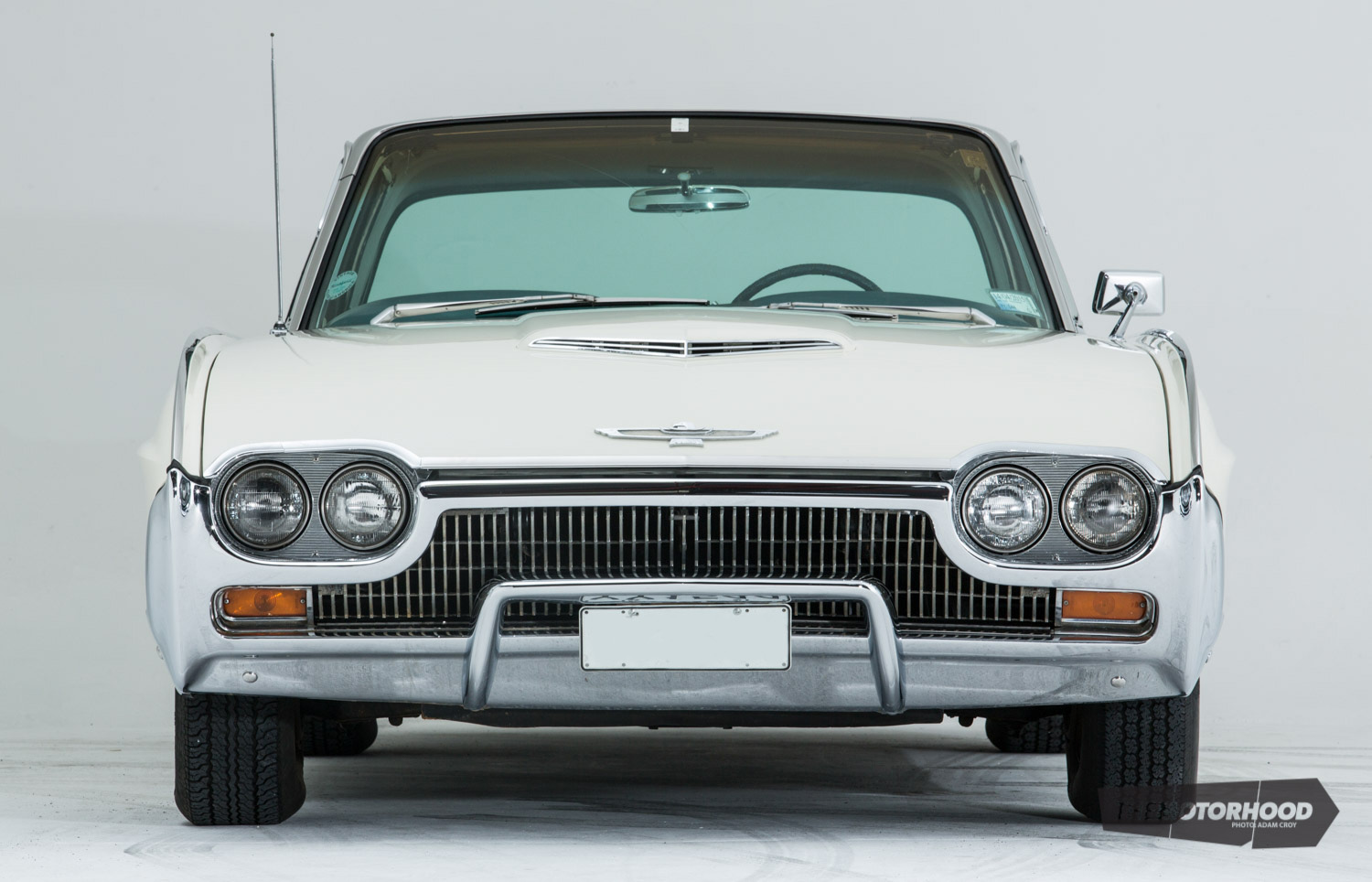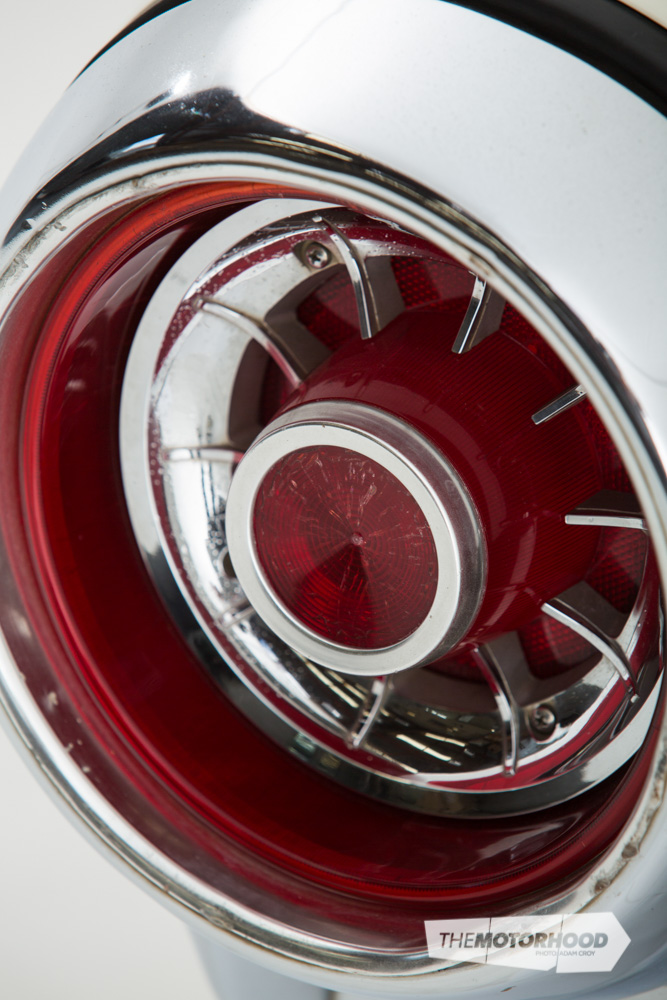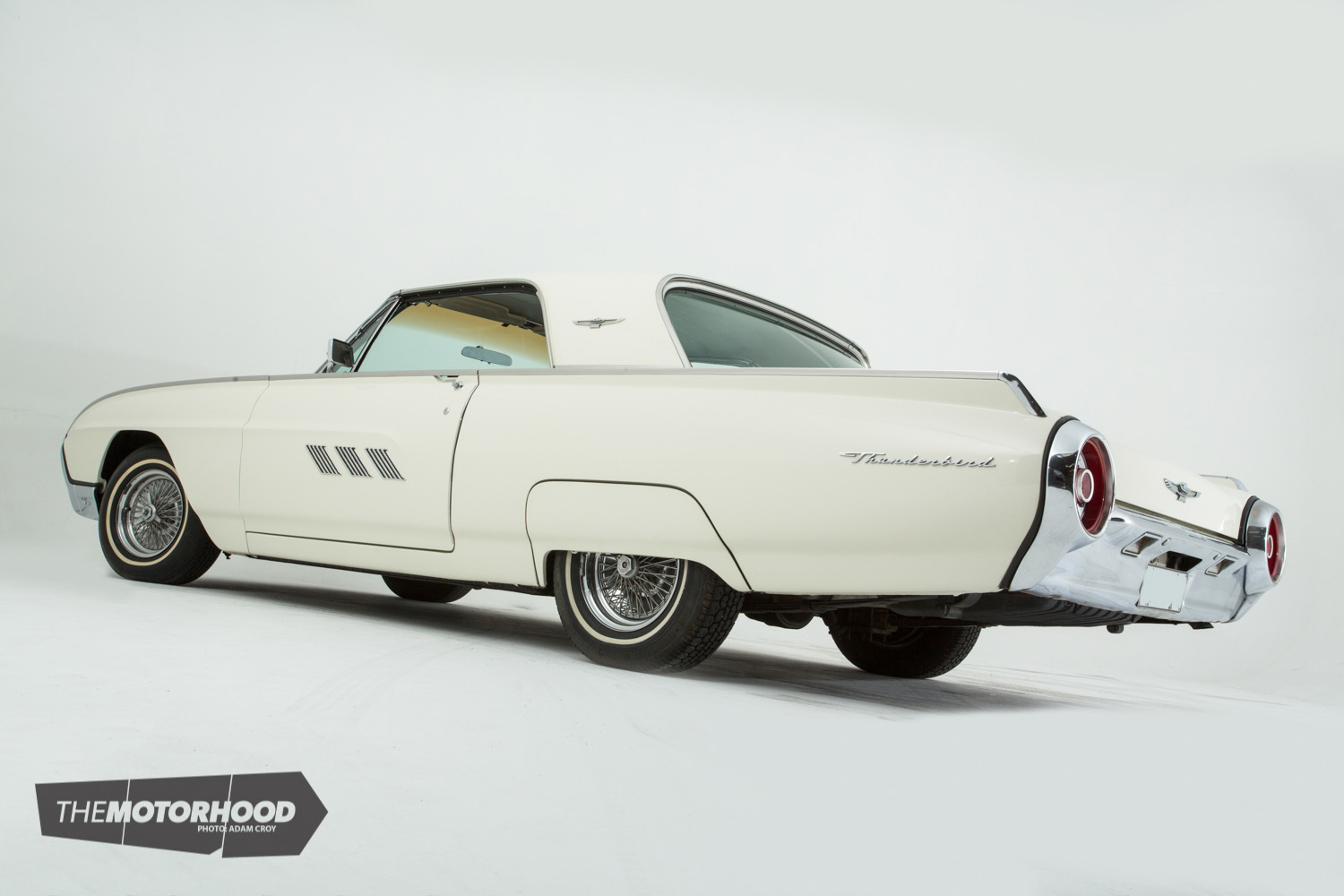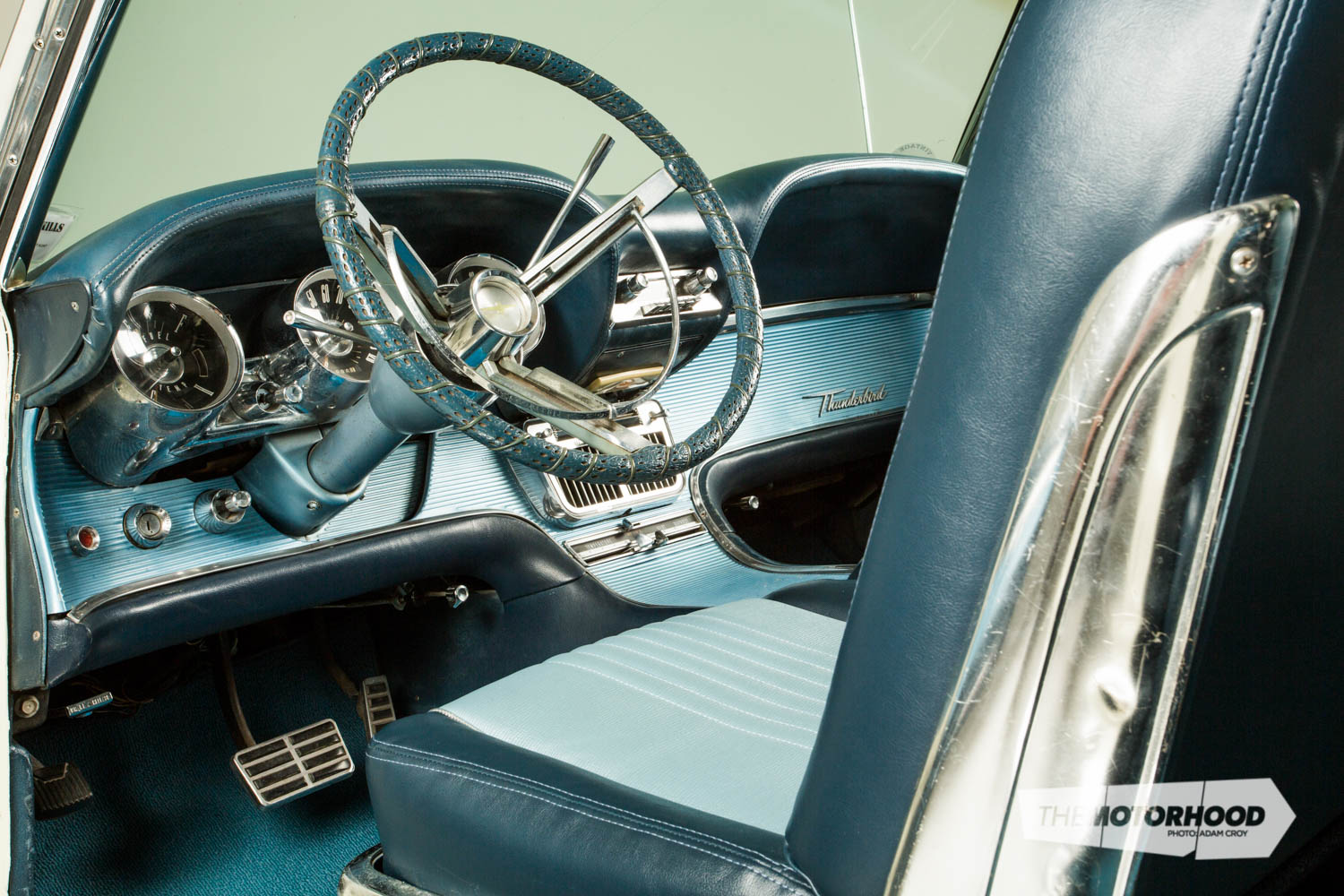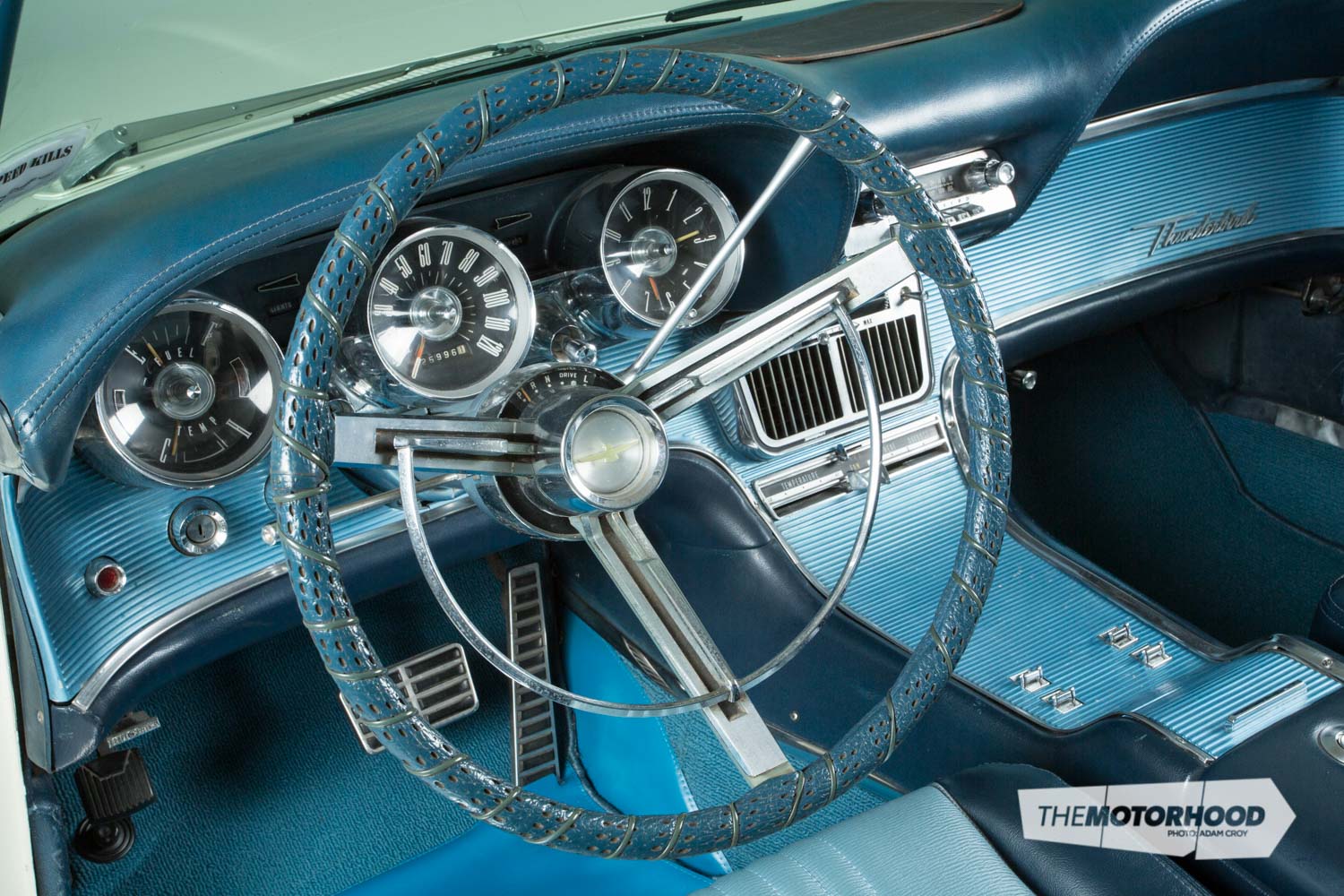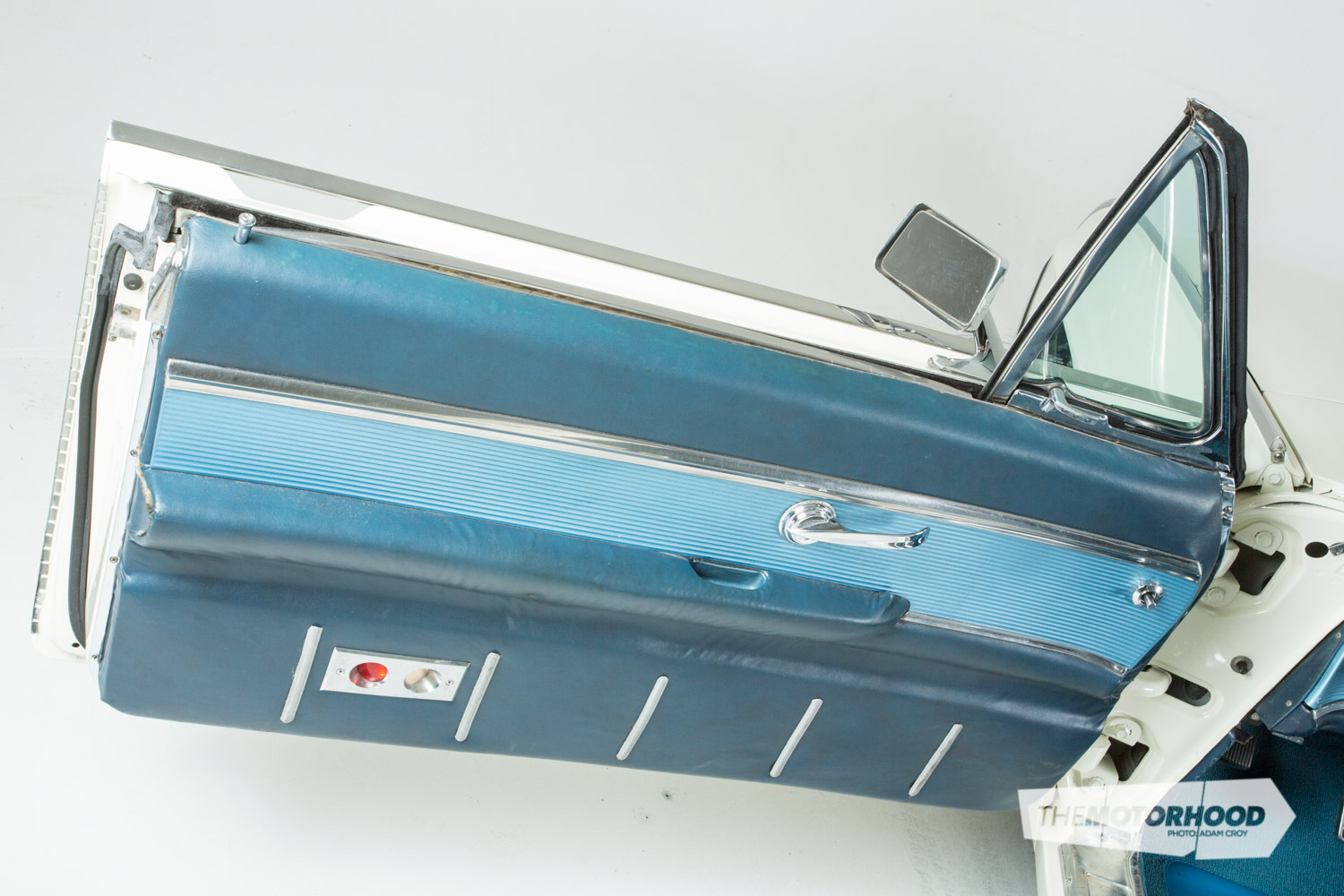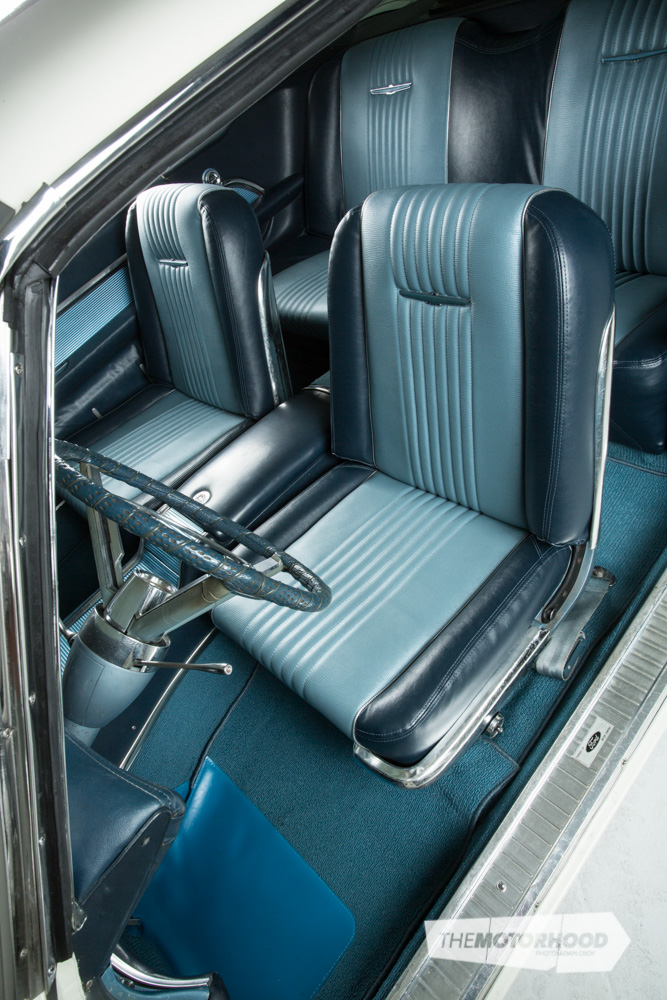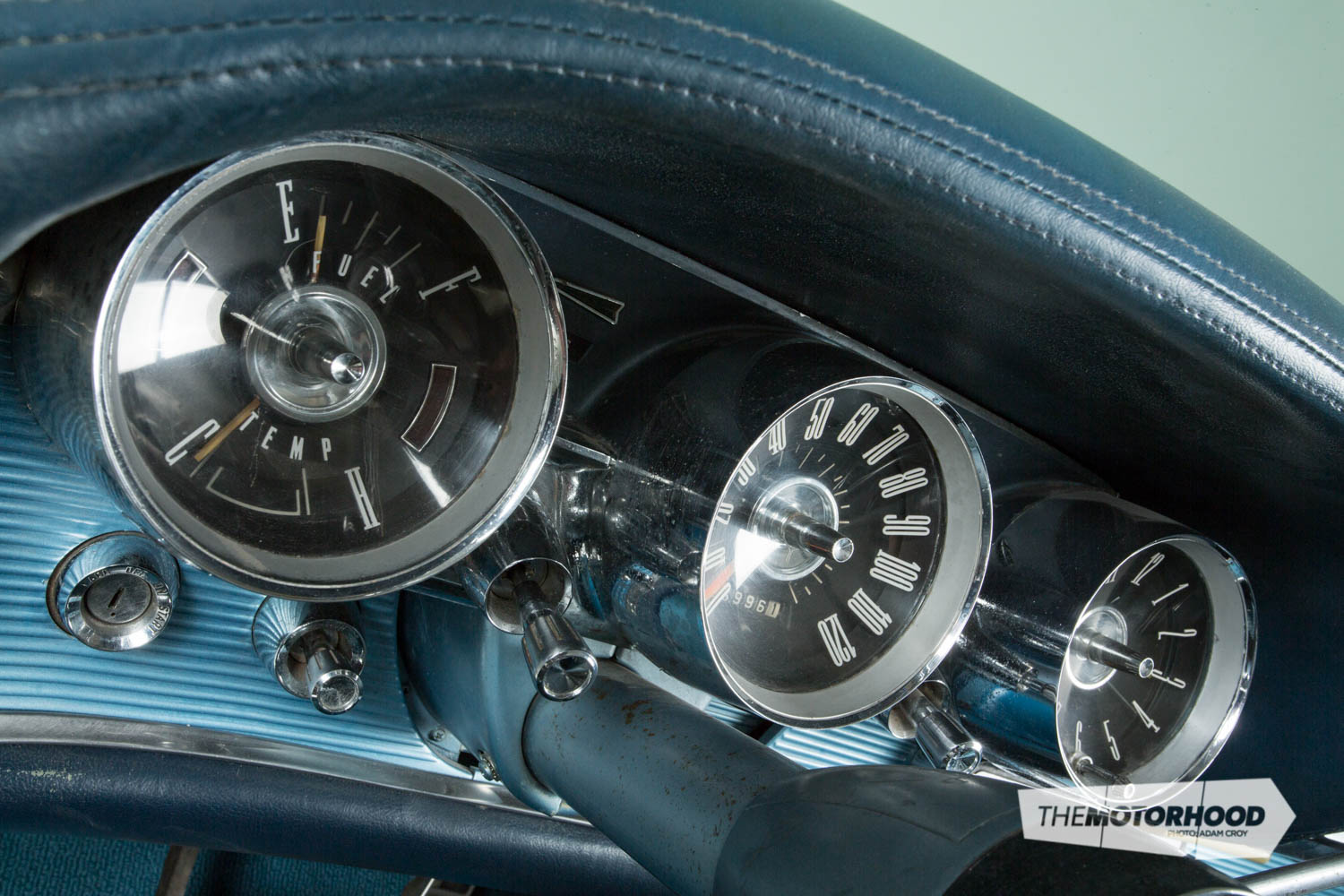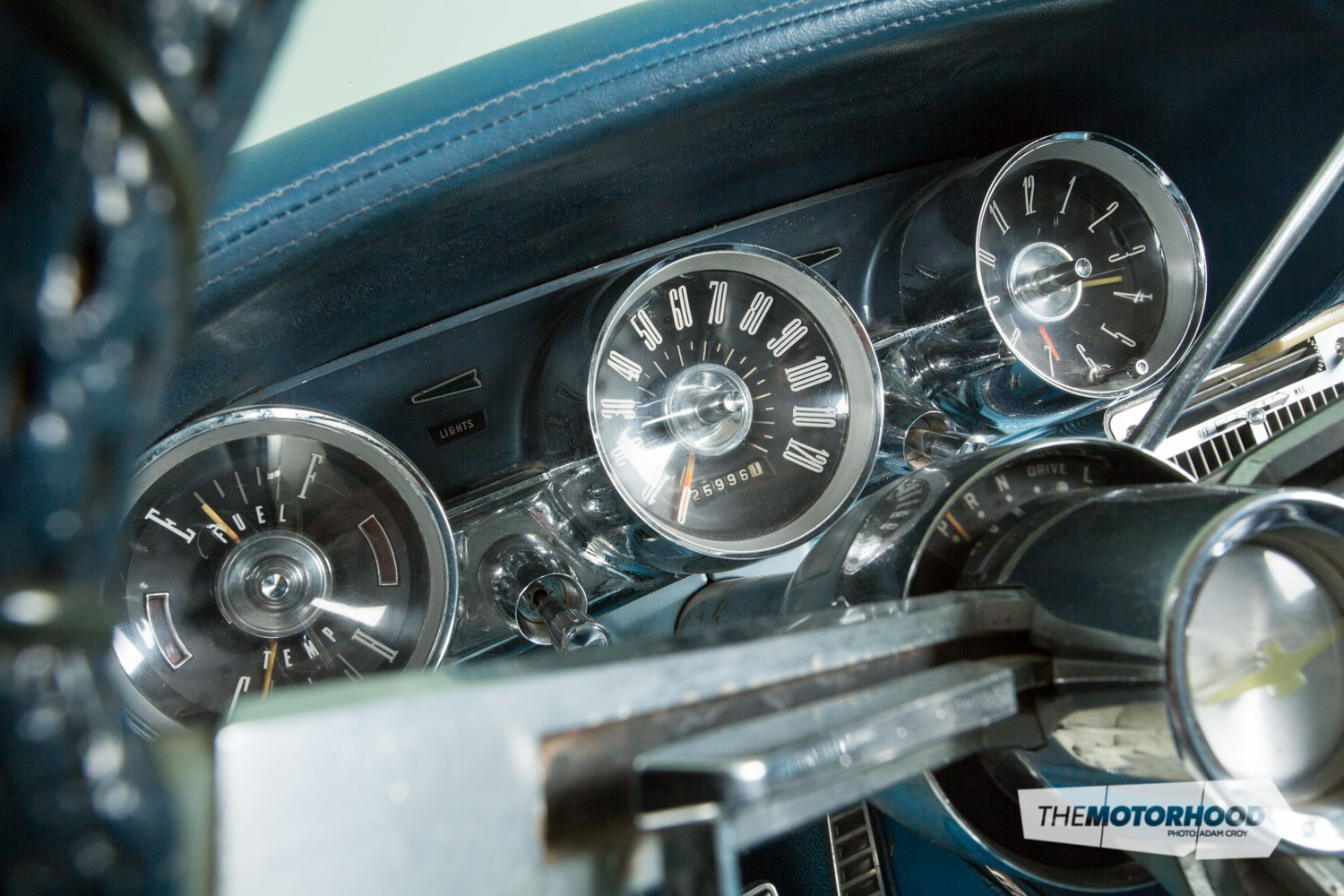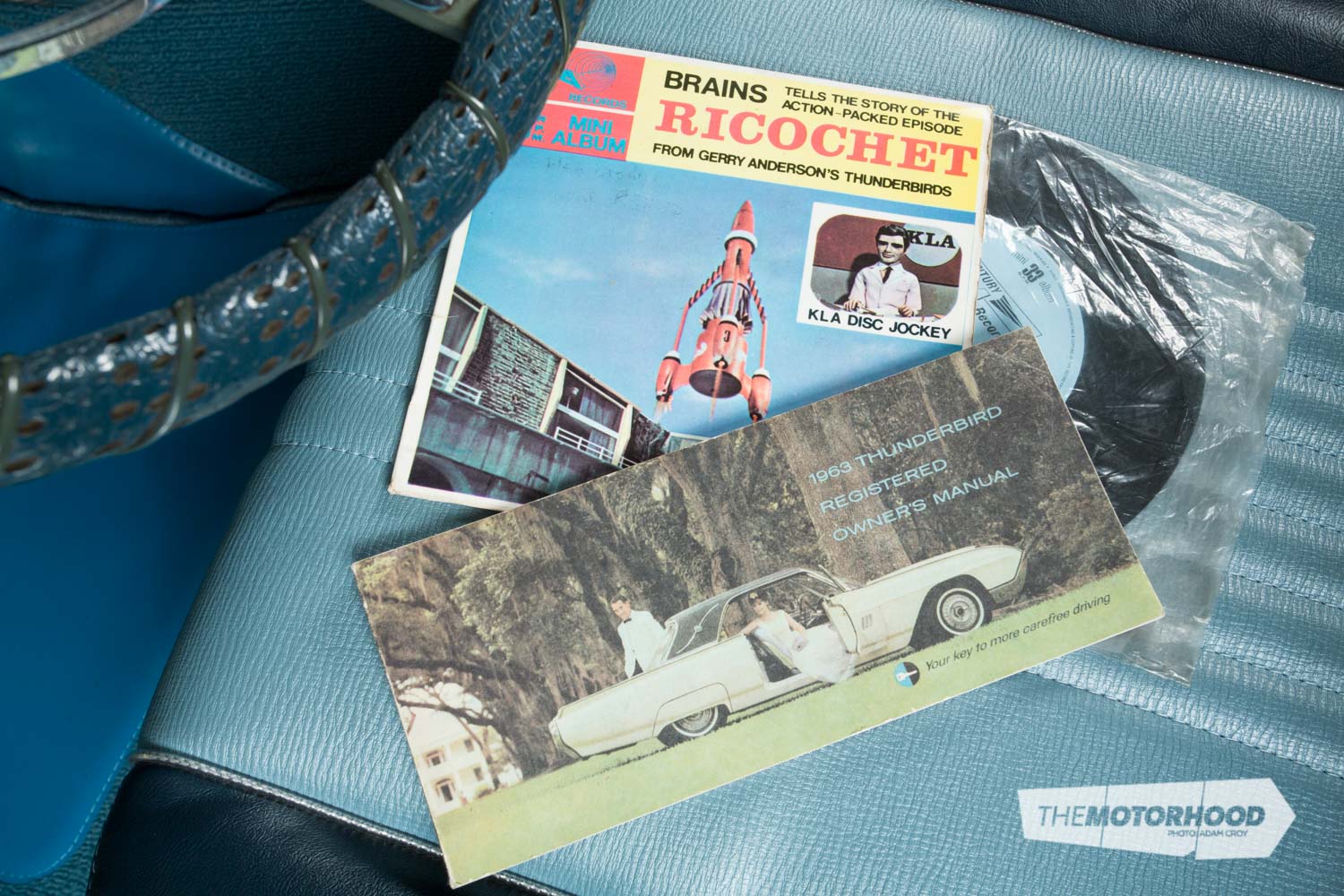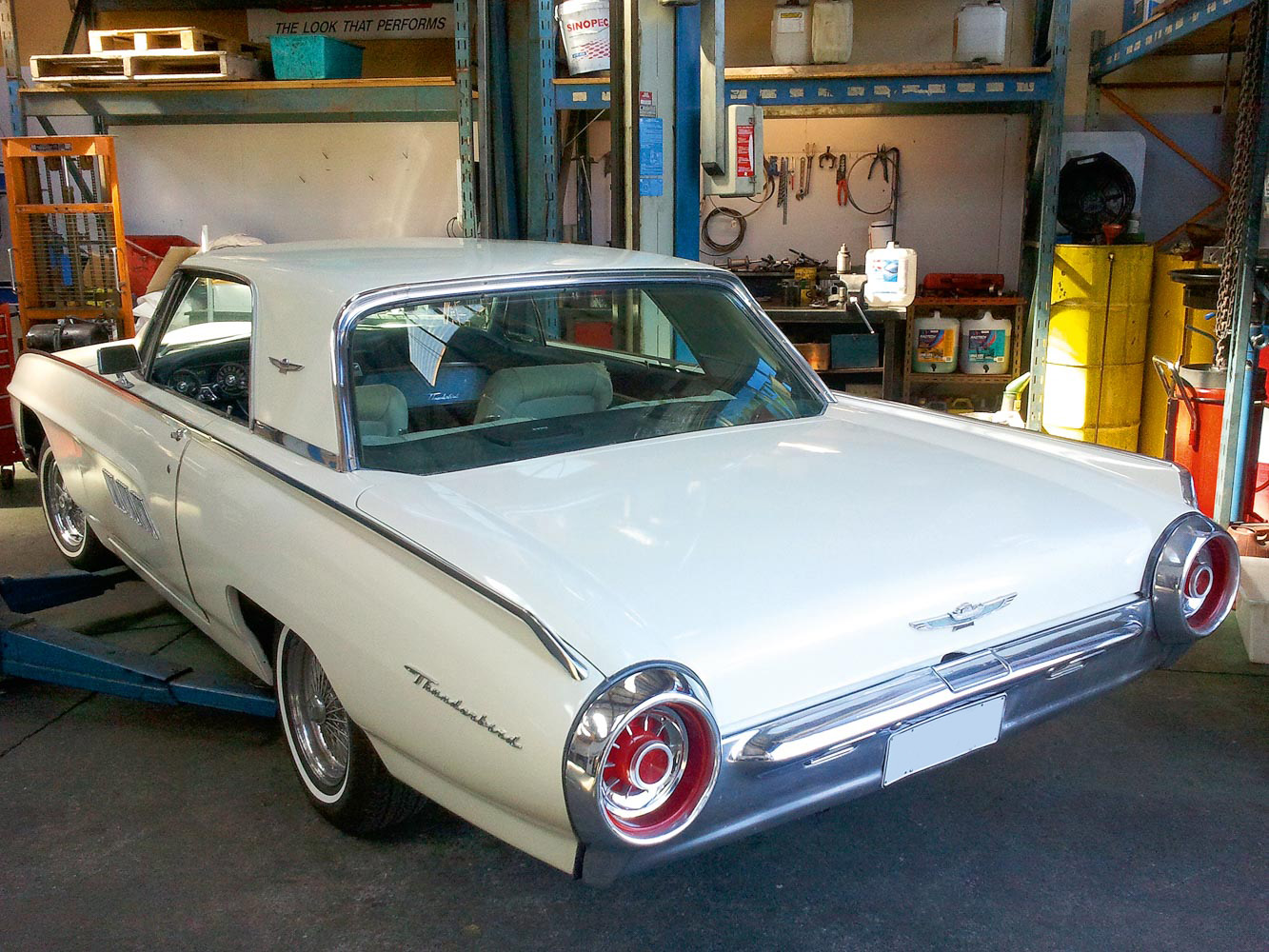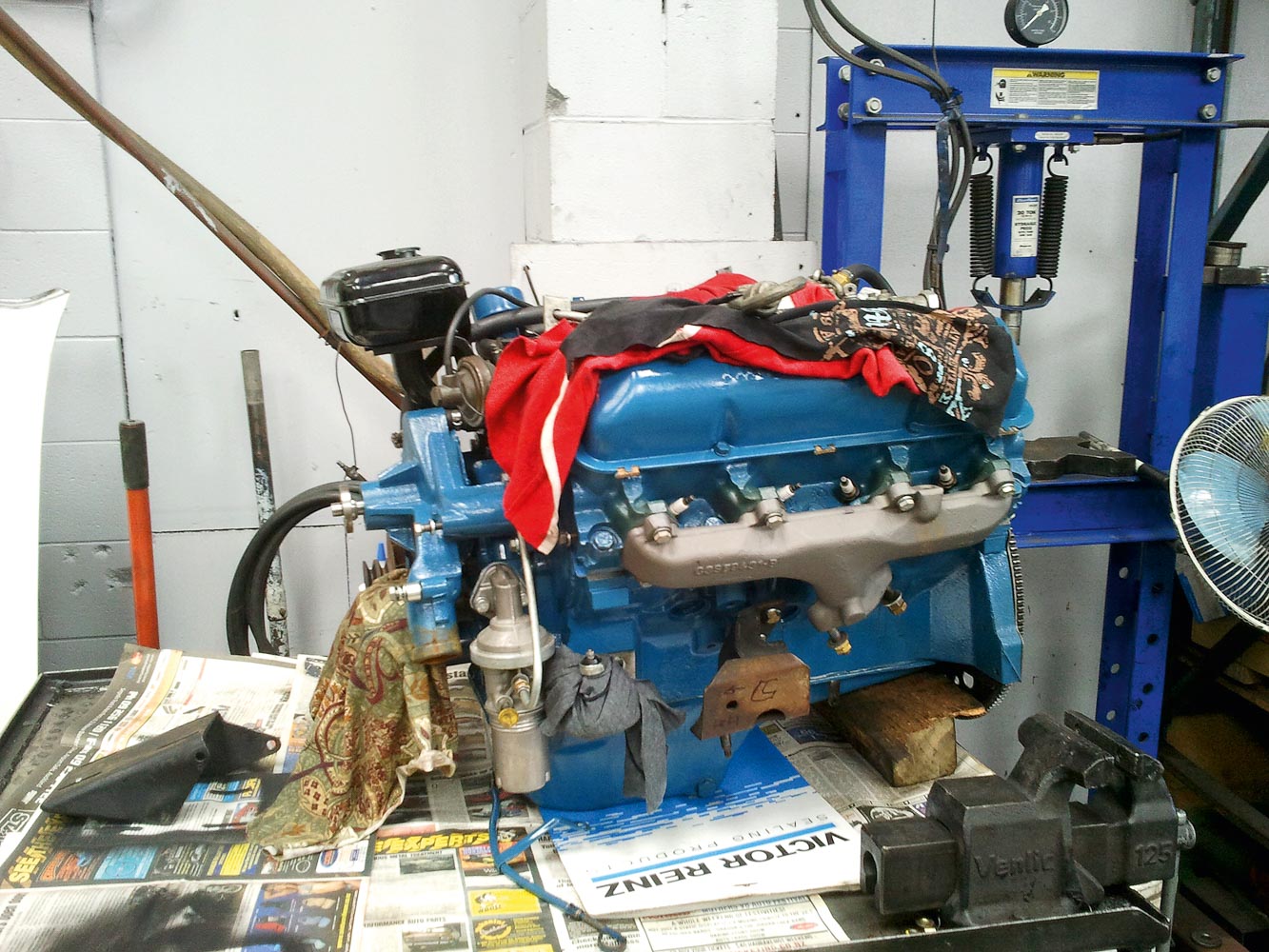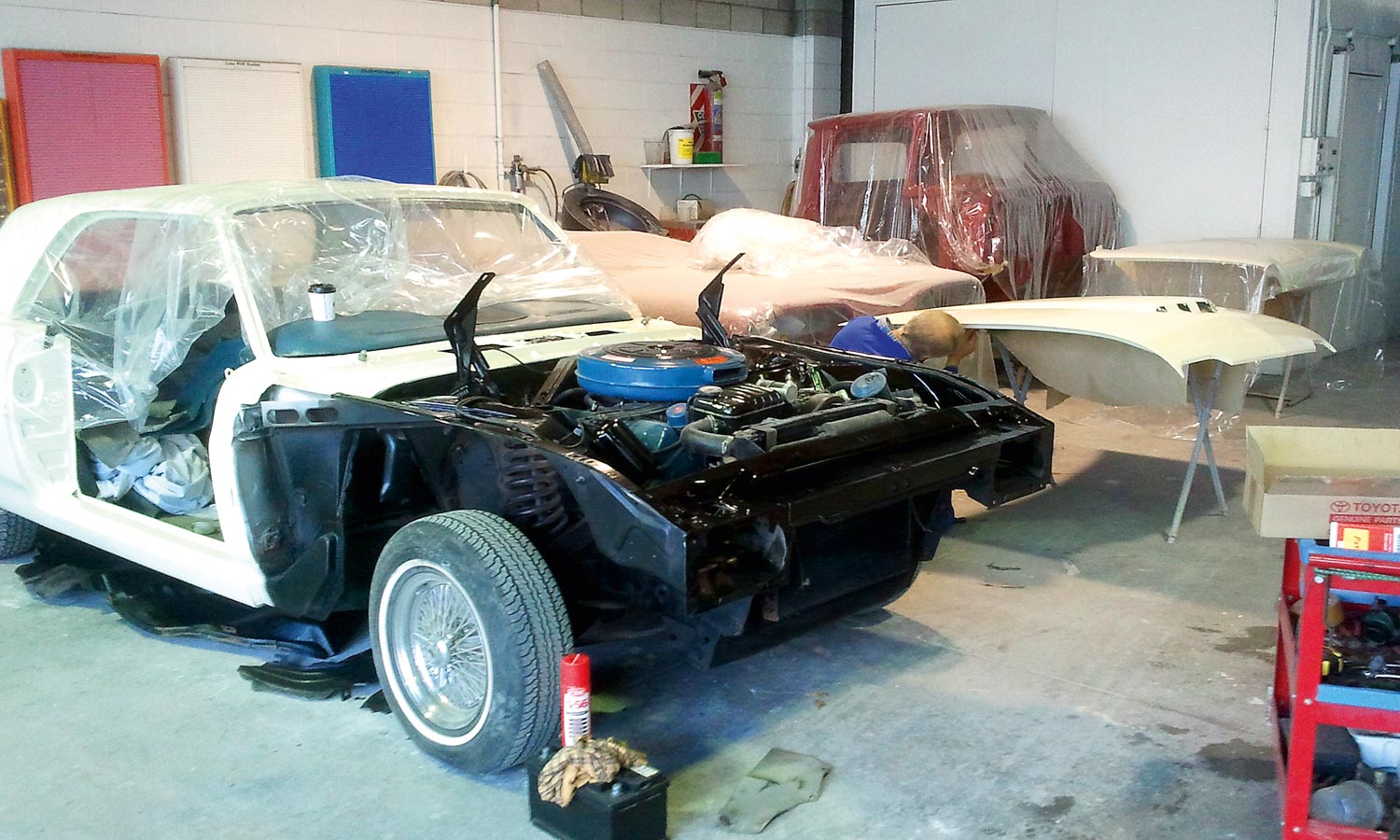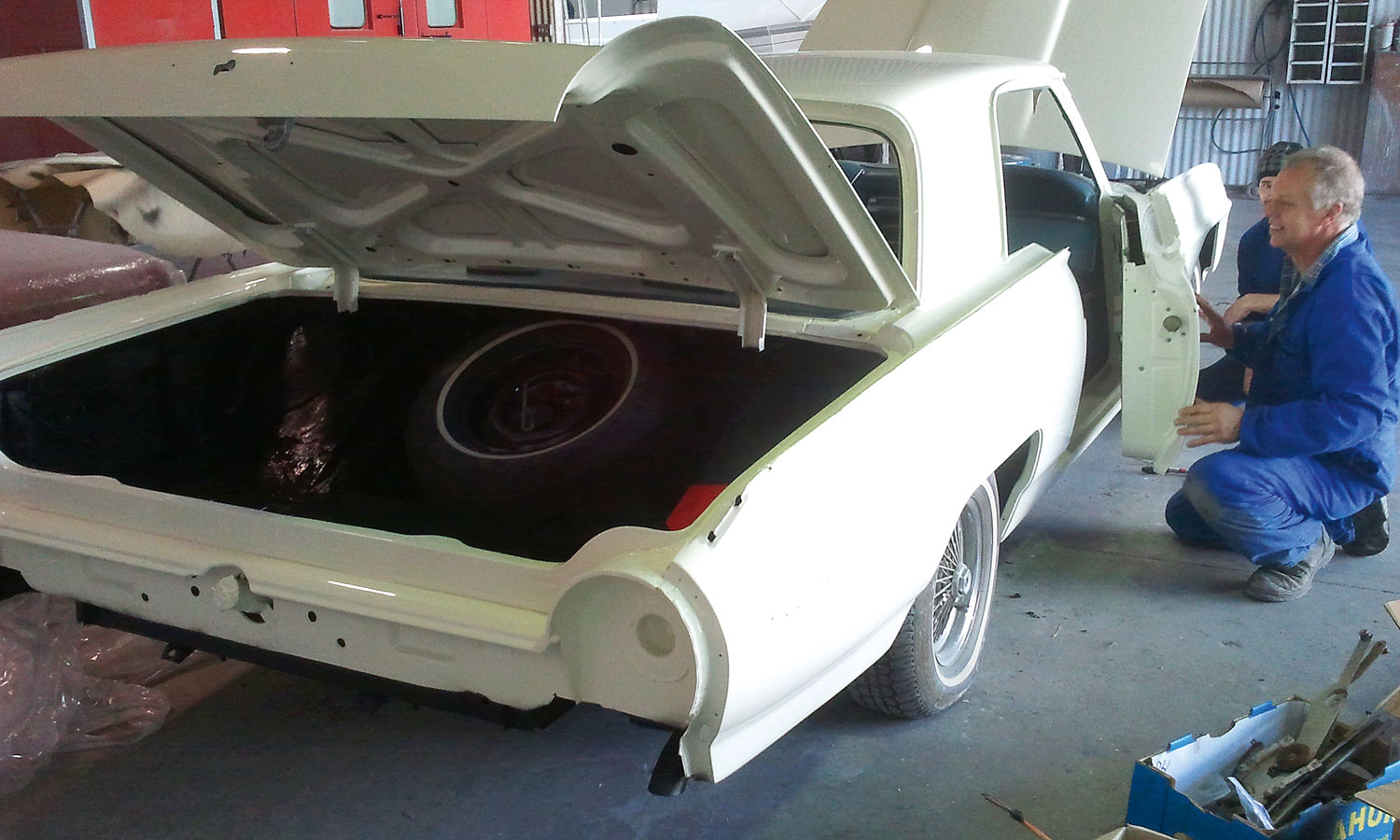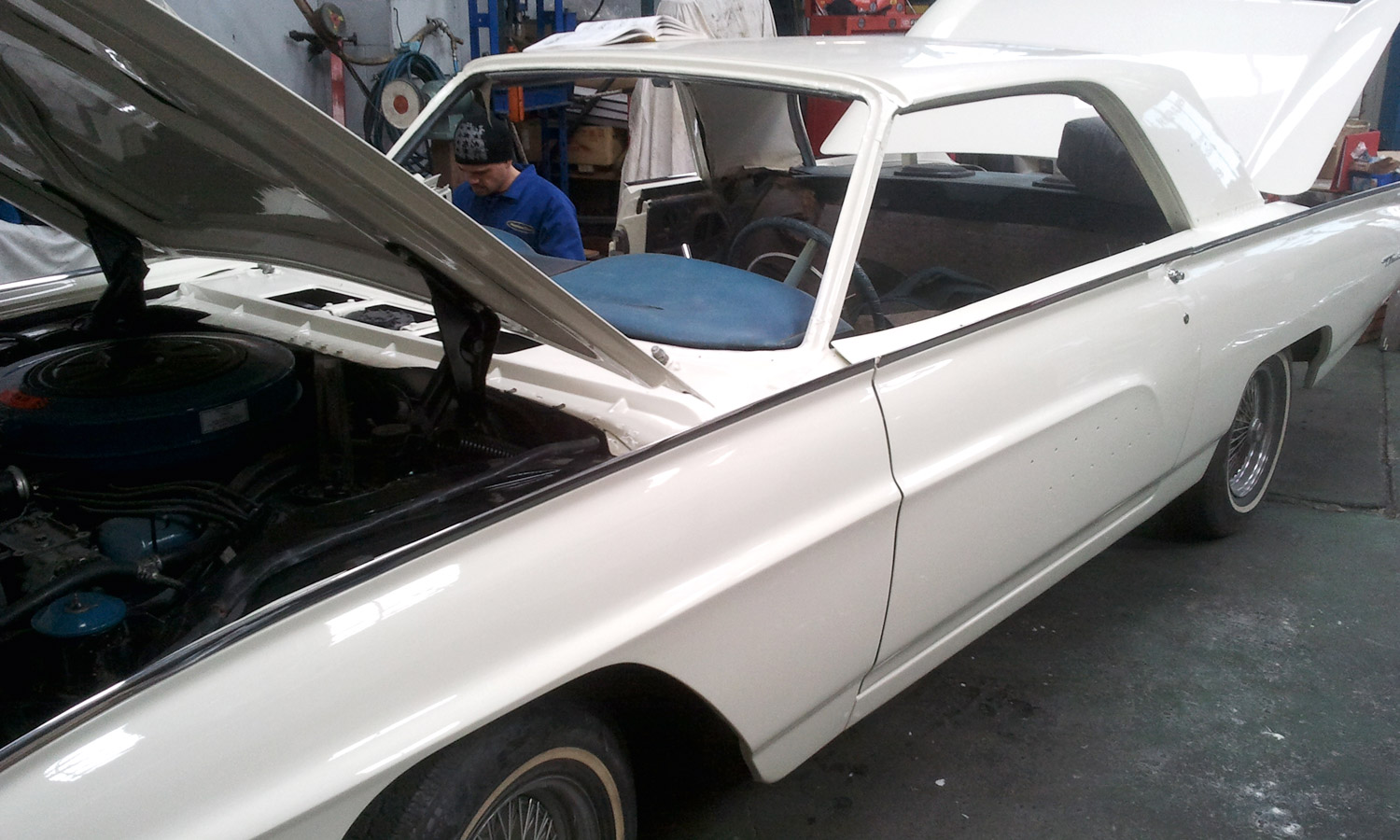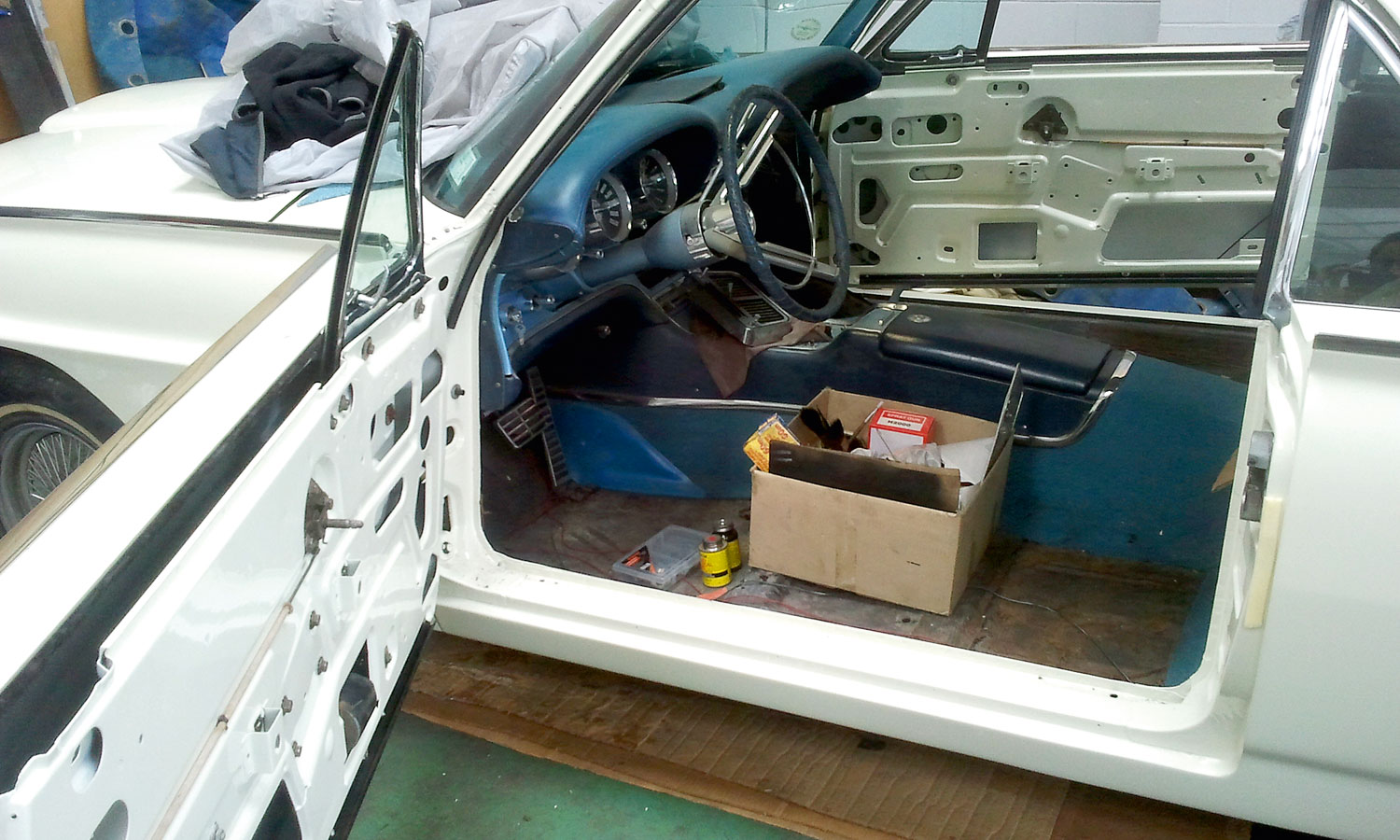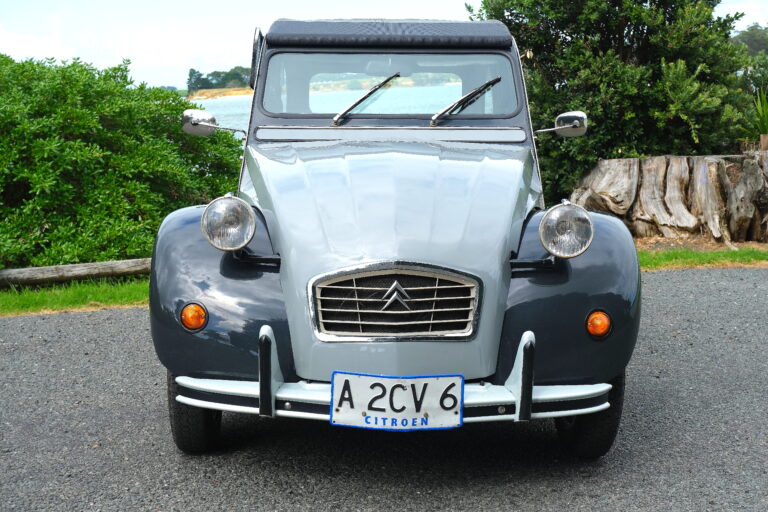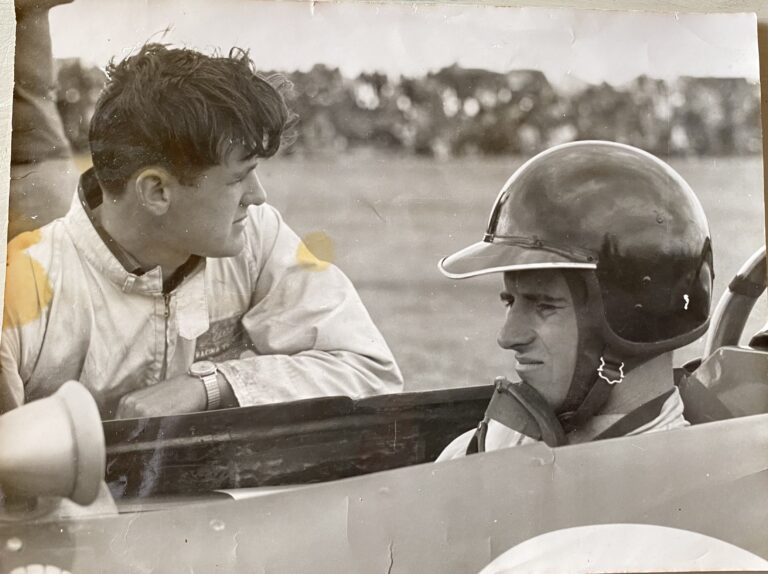data-animation-override>
“Having heard tales of Kiwis travelling to the US during the early ’90s and buying up American tin at ludicrously low prices, Greg Jordan decided it was time to give it a go himself”

Greg Jordan had already experienced some success in a similar vein, buying a 1960 Plymouth Belvedere at the bulk sale of Archie Somerville’s collection from his barn in Whitford, east of Auckland. Some readers may remember this event. Buoyed by this good fortune, Greg felt the next step was a trip to the States — this was long before people were doing such a thing regularly, let alone as a business. Sure, he had heard stories of guys going to the US for cars, but he’d never actually met someone who had done it.
However, the first hurdle to overcome was finding the cash. Back then Greg was working as an apprentice fitter-turner living in a mezzanine workshop across the road from where he was serving his time. So, not exactly a champagne income.
There was one way to solve the problem, and that involved living and working in one workshop at night, and working in the other by day, then saving everything he earned. He’d often wear his overalls all day and then continue working at night on his other projects until it was time to go to bed. Normal clothes were an expense he could do without.

After a few years of serious saving, at the age of 22 Greg had amassed the required funds for a trip to the US to buy a car. He’d arranged shipping before leaving the country and, from memory, that cost was $1800. The deal involved a container with built-in refrigeration that was sent over to the US full of New Zealand meat, but which was due to return empty — although the refrigeration unit took up space at one end, it was perfect for a car to come back in as the bonnet would fit in the area underneath the unit.
The other financial aspect in his favour was the exchange rate at that time — about 64 US cents to the New Zealand dollar, substantially better than the 40 cent per NZ dollar that prevailed for much of the latter half of that decade and the early 2000s.
The big OE
Along with a friend, Greg flew to Los Angeles and, from there, to Houston with a 20kg toolbox as his stowed luggage. He didn’t know what he was after, and while Chrysler products were amongst his preferred options he was flexible. What Greg did know was he wanted to get something which was rust free — that meant a car which, preferably, had spent its entire life in one of the desert states.

Having flown on to Texas and picked up a U-Haul truck at Houston, Greg scoured the local papers, spotting an advertisement for a 1963 Thunderbird just outside Dallas in one of the satellite communities stuck out in the desert.
A drive out to inspect proved that it was a true desert car, one which had never been garaged, having been parked outside like most vehicles in an area that looked like it hadn’t seen rain for years. The vendor was a limousine operator and had a fleet of cars, all parked in the sand as well. A road test proved the Ford went OK, and it looked to be in tidy condition — the asking price was a mere US$2500.
On reflection, Greg reckons the casual transaction proved just how naive he was — he recalls having almost all the required money in one bundle, all he needed to do then was to add a couple of bills to make up the purchase price. He handed over the cash to the seller, who promptly gave Greg a beer, before disappearing into a back room for a moment. On returning, he announced that he had counted the money and it was $100 short. It was hard to argue and besides, Greg wasn’t able to prove whether all the money was there or not, so he conceded that he must have miscounted, not inconceivable. He handed over the ‘missing’ $100.
Cross country trip

Setting off on the long drive back to Los Angeles, Greg initially started by heading eastwards — the wrong direction, of course — into the swamplands of Louisiana just across the border from Dallas. He was stopped early after crossing the State line by a police officer in a plain-clothes car. The officer was surprised to find a young New Zealander driving around amongst the alligators and the slums in his T-Bird. Greg remembers the cop shaking his head in disbelief as he walked back to his vehicle, in all likelihood wondering whether the home country Greg had described was actually real. This was his only brush with the law during the whole trip and, having done nothing wrong, he was soon back on the right road and on his way towards Texas, having stopped in Shreveport.
The other purpose of the trip, aside from buying cars, was to fill the U-Haul truck up with Americana to ship home for sale at an American Retro store which his travelling partner owned. So on the way they stopped at op shops, second-hand stores and flea markets, with the T-Bird becoming the hack vehicle while the U-Haul was gradually filled up.
One of the first moves on the car front was to go to a Pep Boys auto store and buy a new carburettor, as the Ford was using more fuel than Greg figured it should. The thinking was that a carburettor replacement early on would reap benefits in fuel savings across the mileage yet to run, paying for itself on the way. The replacement was a four-barrel Holley, a common carburettor and one known for its reliability. The unit on the car looked decidedly tired, crusty from years of desert driving, with leaky gaskets. Greg picked up a set of plugs at the same time, as well as a few other basic parts that also needed replacing.

From there the friends made fast time across Texas, down through Austin and San Antonio, then back up towards Amarillo. A vial of NoDoz caffeine–based tablets proved helpful with concentration, as much of the driving was done at night, freeing up their time to tour around the towns and cities on the way during the day.
Having already fitted the new spark plugs in a local car park, they stopped in an abandoned gas station on the side of route 40, outside Amarillo, in order to get some shade from the blazing sun to change the carburettor. The new unit went straight on with a new gasket, and after Greg adjusted the float levels and idle jets, the rig was up and running inside an hour. He distinctly remembers taking the Ford onto the road immediately afterwards and, in his haste to test the new set-up, he gassed it down the wrong side of the road for about 50 metres before coming to his senses and pulling across to the right-hand verge.
Roadside repairs
Several days of driving by night and buying up Americana by day followed as they crossed New Mexico and into Arizona. They took the Albuquerque-Flagstaff-Phoenix route, discovering that the latter was a notably attractive town, with plenty of irrigation — it was a relief to see greenery and trees after several days of driving through arid wasteland.

Pretty soon they were on the other side of Arizona. This was where the first breakdown occurred, as the T-Bird lost power and coasted to the side of the road in a rather dubious looking area of a town. It was daylight, fortunately, and Greg was soon surrounded by a group of the curious local citizens, most of whom looked like anti-methamphetamine-usage poster boys. He had no choice but to remain cool and get under the hood for a bit of engine diagnosis. Plenty of fuel was being fed into the Holley, but with no spark it was soon clear that the coil had failed. The group of onlookers had increased in size, as had the level of agitation after Greg persuaded one of the members to fetch a coil from a nearby wreck for a tenner. The tension in the situation was palpable, and one of the older guys watching whispered to Greg that he needed to be careful, as the boys were concocting a ‘game plan.’ What exactly this entailed, Greg wasn’t sure, but he suspected it involved robbing him of any valuables.
It was early evening and the light was fading when Greg finally got the second-hand coil fitted, and he was relieved when the Ford fired back to life first pop. A royal wave and they were out of there, all the more aware that breakdowns in backwater America can be hazardous to man and machine alike.

The temperature really started to climb as our intrepid heroes entered California, and Greg learned the importance of deflating tyres when entering a desert the hard way while passing through Joshua Tree National Park. Much of their previous driving had been done on concrete, but now the combination of asphalt and temperatures around the 50-degree Celsius mark over-pressurized the rear left tyre. The tube blew through the sidewall, but remained inflated — sticking out like a little balloon. On opening the boot to get the spare out, Greg found that it had done the same thing, although its tube had actually burst.
He was forced to deflate the left rear tyre and drive on — all the way to Los Angeles, another 200 or so kilometres — he could hear the tyre make an unnerving noise every time the damaged part came round to the road. Although he feared the tyre would blow completely, it lasted the whole way.
Another deal

Once in Los Angeles, Greg geared up to buy another car to ship back home alongside the Thunderbird. The trick here was to get the local second-hand paper early — and Greg queued up at 5am in the morning at the printing house which produced it, gathered in the dark with around a dozen hardened local second-hand dealers. As soon as the first bundle of papers was printed they were brought out, and each dealer began trawling through their relevant sections in earnest. By 6am Greg had his section all marked up, and was ready to start pestering people with early-morning calls. A few hours later he had already viewed a couple of cars and managed to purchase a 1958 Pontiac from a Mexican owner. It was a black-plate car and had only one person on the papers other than the Mexican, who insisted on meeting Greg in the forecourt of a McDonalds. The owner didn’t believe that Greg actually had the cash to buy until he fronted up with his pile of $100 notes. The cost of the Pontiac was $4000 — with Greg sure that there was something of a premium on LA–based cars as compared those bought in the Texan desert.
Although both the vehicles Greg purchased were from dry States and rust free, the Thunderbird proved to have the most solid body. What was interesting about the Pontiac was the tar-like residue present on the topsides of the trim on the body — very difficult stuff to get off — and apparently smog was the culprit: all the years of being on the road in the city with the world’s worst air pollution through the ’70s and ’80s had left its indelible mark.
With that final deal done, a few days later all the paperwork was complete, and both cars were on their way back to New Zealand.
Home soil

Once the Thunderbird was safely here, having been driven over 3000 kilometres in America and now within a kilometre of Greg’s Onehunga workshop, where it was to be stored, the Ford was involved in an accident whilst waiting for traffic to clear at the Royal Oak roundabout. Greg couldn’t believe his bad luck but, fortunately, the damage was largely superficial — the car that had hit the Thunderbird had only been travelling at walking speed at the time.
The result was a dented rear quarter panel and a broken badge.
The damage was repaired, and 15 years of storage followed for the car as Greg attended university, and spent time working overseas.
By the time it came out of storage, its engine needed to be stripped and new head gaskets fitted in order to get it going.

Over the last few years the Thunderbird has been given the full treatment — being fully rebuilt from top to bottom, inside and out. This proved to be reasonably easy, as the body was so rust free — indeed, the dip stripper who removed the paint remarked that the Ford was the best car that he had ever stripped, with the panels and doors looking like new with the paint off. On the other hand, all the rubber components had perished in all that harsh US sun, and there was a fair amount of red desert dust and dead insects trapped in spaces within the body.

Phil Stokes attended to the car’s panel and paint, while Morrison Diesel provided the mechanical services. Ken at Auckland Automatics gave the Thunderbird’s transmission a once-over, and Jason Loose from Cut-Loose Upholstery was responsible for refurbishing the car’s classy interior.
Now the Ford is complete and completely restored, it’s time for Greg to concentrate his efforts on the next project — he’s not entirely sure what that’ll be as yet, but one thing’s for certain, it’ll be one heck of an adventure.
1963 Ford Thunderbird
Engine
- Model: Ford V8
- Capacity: 6.38 litres (390ci)
- Bore/stroke: 102.9 x 96mm
- Valves: OHV two per cylinder
- Comp ratio: 9.6:1
- Max. power: 224kW (300bhp) at 4600rpm
- Max. torque: 579Nm at 2800rpm
- Fuel system: Four-barrel Holley
- Transmission: Three-spee d automatic
- Suspension F/R: Upper and lower, A-arms, coil springs / live axle, leaf springs
- Steering: Recirculating ball
- Brakes F/R: Drum
Dimensions
- Overall length: 5207mm
- Width: 1930mm
- Height: 1359mm
- Wheelbase: 2870mm
- Track F/R: 1549/1524mm
- Kerb weight: 1975kg
Performance
- Max speed: 203kph
- 0-100kph: 9.5 seconds
- Standing ¼ mile: 16.6 seconds


